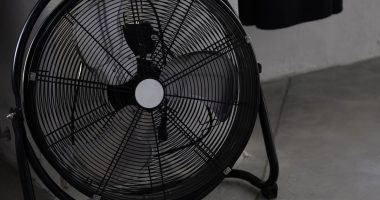Share this @internewscast.com
A doctor has revealed three everyday household items as hazardous to health and suggests binning them immediately.
Dr Saurabh Sethi, a gastroenterologist, said scented candles were particularly dangerous, stating: “These contain phthalates, which are known to disrupt hormone levels, and cause respiratory issues.
“Opt for unscented or natural candles made from soy or beeswax.”
Dr Sethi also cautioned against plastic cutting boards, explaining: “These can degrade over time, releasing microplastics into your food, which can accumulate in the body. Switch to a wooden one to minimise risk.”
Lastly, Dr Sethi warned about scratched or chipped non-stick pans, stating: “These contain PFAs, which have been linked to high blood pressure, cholesterol and reproductive issues.”
“Damaged pans can release these particles into your food. So make sure to either replace these pans as soon as they are scratched or chipped. Or replace those with safer alternatives, such as stainless steel or cast iron.”, he added.
Phthalates are a group of chemical compounds commonly used to make plastics more flexible and durable, often found in personal care products, household items, medical devices, and food packaging. Phthalates, known as endocrine disruptors, can interfere with the body’s hormone systems, reports the Mirror.
They have the ability to mimic or block hormones such as estrogen and testosterone, leading to:
- Altered reproductive development
- Reduced sperm count and quality
- Early puberty in girls
- Hormone-related cancers (potentially)
Certain phthalates, like DEHP and DBP, are associated with:
- Birth defects
- Miscarriages
- Developmental delays in children
- Testicular toxicity in animals
Inhaling them (like from scented products) may result in:
- Asthma and allergy symptoms
- Potential immune system effects in children
Animal studies suggest some phthalates may encourage tumour development. Some health agencies classify DEHP as possibly carcinogenic to humans.
Microplastics are minuscule plastic particles often invisible to the naked eye – and they are deemed harmful for both environmental and human health reasons.
Microplastics can transport toxic chemicals, either from the plastic itself or absorbed from the environment. These include:.
- Phthalates and Bisphenol A (BPA) – endocrine disruptors
- Heavy metals – like lead or cadmium
- Persistent Organic Pollutants (POPs) – like PCBs or DDT
These chemicals may interfere with:
- Hormonal balance
- Reproductive health
- Neurological development
- Immune function
PFAS stands for Per- and Polyfluoroalkyl Substances – a large group of man-made chemicals (over 10,000 types) used since the 1940s to make products resistant to water, oil, heat, and stains.
Often dubbed “forever chemicals” for their persistent nature, PFAS hardly deteriorate in the environment or the human body.
These compounds are used across a wide range of household items, including:
- Non-stick cookware (e.g. Teflon)
- Waterproof and stain-resistant fabrics (e.g., Gore-Tex, Scotchgard)
- Fast food wrappers, microwave popcorn bags
- Cosmetics (especially long-wear or waterproof types)
- Firefighting foams
- Carpets, upholstery, and paints
PFAs have been associated with various health issues, such as:
- Interference with thyroid function
- Developmental delays in infants and children
- Disruption of reproductive hormones
- Increased risk of kidney and testicular cancer
- Elevated cholesterol levels
- Liver damage
- Suppressed immune function
- Reduced response to vaccinations (especially in children)
- Low birth weight
- Pre-eclampsia
- Fertility issues















